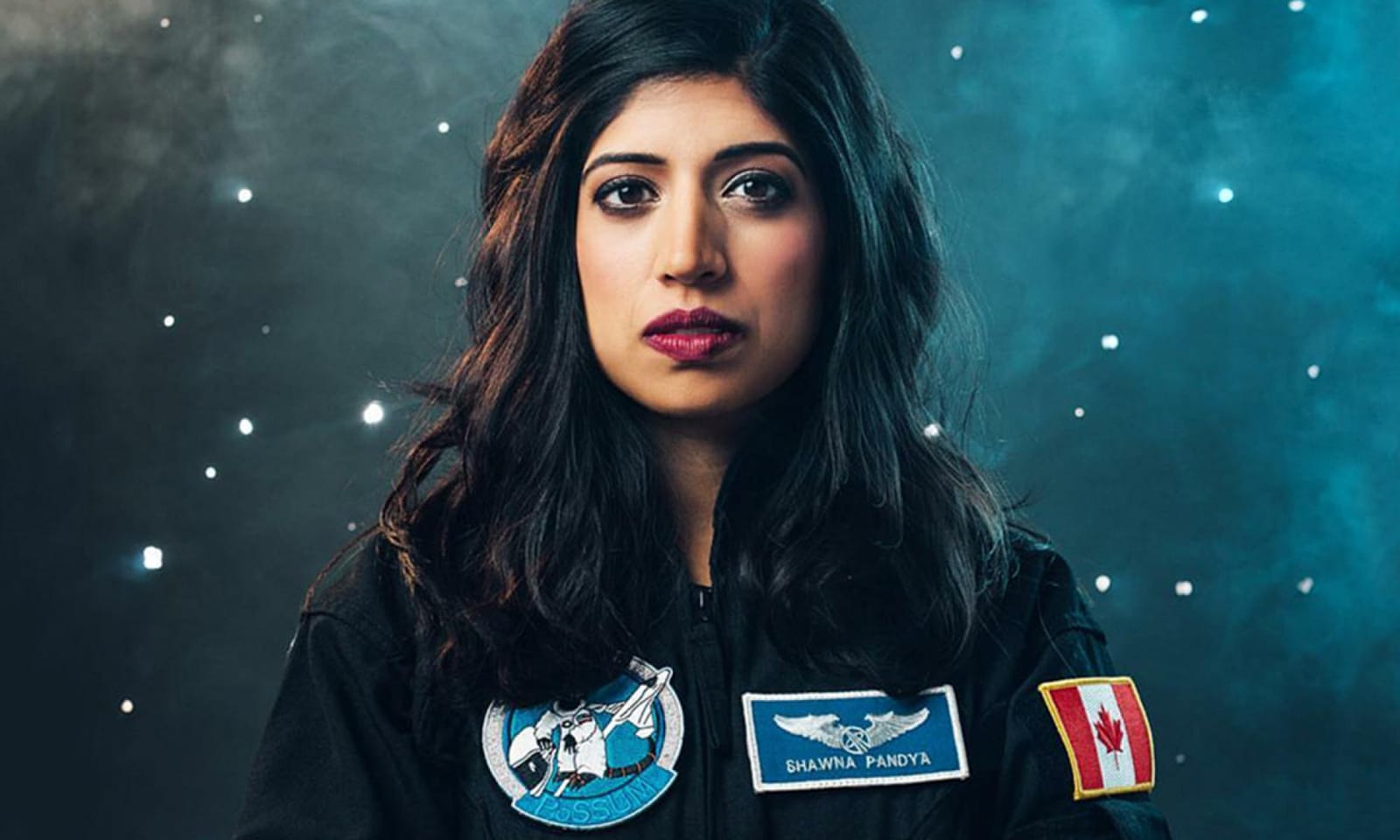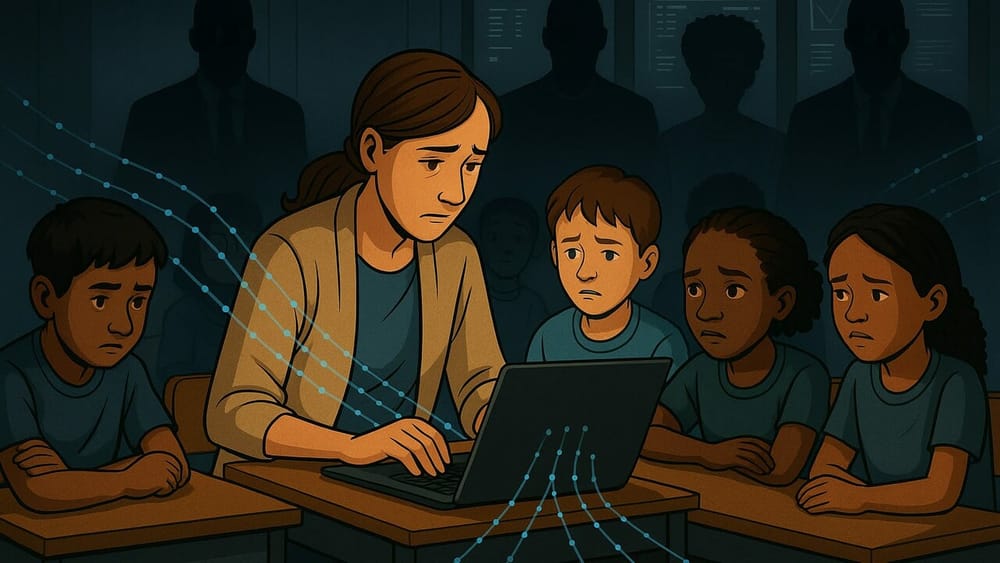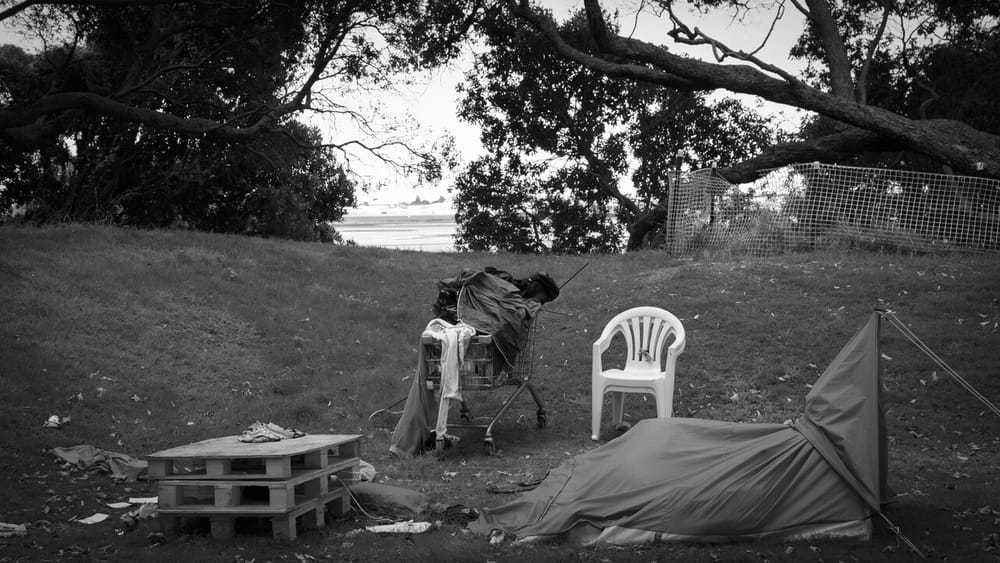In the face of the many seemingly unsolvable problems of the world, it takes courage, faith and determination to take on the role of a superhero. Colours of a Changemaker is a series of interviews with Black, Indigenous and People of Colour from around the world who are using their vocation to create social and environmental change. As Gandhi once said, we must be the change we want to see in the world, and these changemakers are doing just that through their art, music, written works, social platforms and much more.
Dr Shawna Pandya is a Canadian Indian woman who wears many hats: she’s a physician, space medicine expert, speaker, scientist-astronaut candidate and even an aquanaut—the underwater counterpart of an astronaut. As a child, Dr Pandya always dreamed of going to space, and the journey to fulfil that dream has taken her on many adventurous detours. In this interview, Dr Pandya talks about surviving 20 feet under the sea, underrepresentation in space and what drives humans to explore the unknown.
I want to get right into your unusual career trajectory. Can you tell me how you went from neurosurgery to being an astronaut candidate? What was the path that you took?
So my entire life has been influenced by this dream of going to space. As a kid, I wanted to be an astronaut. I was influenced by Dr Roberta Bondar, the first female Canadian astronaut in space, and I looked at her trajectory and saw that she was a female and she was a Canadian and I said, “Okay I’m a female and I’m a Canadian, so now all I need to do is be a neuroscientist, a physician and then an astronaut like she was.” And that’s what influenced me to study neuroscience in my undergraduate degree, pursue medicine as well as a career in space.
You wear many hats: neurosurgeon, physician, entrepreneur, citizen-scientist astronaut, martial artist and aquanaut. Can you talk about how these different roles intersect and speak to each other/interconnect?
Yeah, absolutely. So, when you ask what the commonalities are between testing space suits in microgravity, for example, with project PoSSUM in the International Institute of Astronautical Sciences versus working in the emergency room versus developing virtual reality medical technologies for medicine in space and on Earth, the commonalities are enduring harsh conditions, making critical decisions under quickly changing scenarios. And then when you look closer to home, I work a lot of rural emergency medicine as well as have an interest in space medicine, and in both scenarios, you’re trying to keep humans healthy often in a resource-limited scenario where you may not have all the bells and whistles of a major hospital, for example. So the lessons that I learn in the rural emergency room translates into space medicine and vice versa. The lessons learned for space also transfer back into rural medicine.
On that note, what are your thoughts on the notion of finding one’s purpose in life? Do you agree that every person has a singular purpose in life or do you feel like life is something where you get to try many different things?
I think everyone’s different. I think there are certain people who knew from the day they were born they wanted to be a surgeon or they wanted to be a gymnast or they wanted to be an artist and for them, that path is clear cut and they pursue their passion from day one. I think for other people, it’s a fact-finding mission. Definitely here in Canada and the US, we often hear these graduation speeches that say “follow your passion,” but not everyone knows what that means. And I think part of that can be a scientific experiment in that you have a hypothesis—you like something, you think you have a passion for something and then the job is to pursue it and, you know, see if it truly is your passion. And so life is a fact-finding mission; it’s about getting more data points about what we think we love and where we think we can make a positive difference, and when we know that is different for everyone. And sometimes, there can be multiple passions and multiple purposes. I love medicine; I love space; I love exploration; for me, there are multiple pursuits and everyone is different.
Before we go into some of our “space-related” questions, I’d love to learn more about your role as an aquanaut. I was kind of surprised to learn about it when I was researching you, and I didn't even realise that being an aquanaut was an actual thing. So what are the biggest differences between being an astronaut and an aquanaut, apart from the obvious?
So when we talk about being an aquanaut, we talk about someone who has lived underwater and breathed the ambient air temperature and pressure for over 24 hours. So I achieved my aquanaut designation on a five-day underwater science mission in 2019. We lived at the Jules’ Undersea Lodge in the Florida Keys for five days at 20 feet of depth, and we conducted science experiments and technology demonstrations over the course of that mission. So when we talk about what it takes to be an astronaut, looking at crews who have gone to space, who have done so successfully, the similarities are: you’re very team-oriented; you’re very crew oriented; you’re very mission-oriented. And that doesn’t change whether you’re living underwater or whether you’re living in space or whether you’re living in Antarctica on a scientific mission.
Obviously, there are the physiological differences when it comes to living and working in space. So when we talk about the space medicine aspects of keeping astronauts healthy, we know that the microgravity or zero-gravity environment is a threat to crew health; the increased radiation, the distance from Earth, the isolation, the confinement, the altered day/night cycles—those are the biggest differences. Some of the similarities still exist when it comes to being an aquanaut. So the isolation and confinement, being resource-limited, having to think on your feet, being far from medical care if an accident happens and then some of the physiology is different. It was less of a risk [for us] because we were only at 20 feet, but when you look at the NASA NEEMO (NASA Extreme Environment Mission Operations) missions at Aquarius Reef Base, which is very close to the Jules’ Undersea Lodge, that’s 50 feet underwater. And so the difference is that when you’re at 50 feet and you’ve been at saturation, if you don’t decompress slowly over 16 hours, you risk a dive injury. So the biggest physiological difference would be how you would get injured and how the environment would hurt you at depth underwater versus in space.
That’s fascinating. Speaking of the differences between exploring oceans versus space, it seems to me that the underwater world is much less explored and perhaps perceived to be less glamorous than outer space. Do we need to be exploring our oceans more?
Absolutely. So when we talk about what we know about the oceans to date, approximately only five percent of our oceans have been mapped and 95 percent remain unmapped. We’ve mapped more of the surface of the moon than we have of the oceans. More people—12 men to date—have walked on the moon, whereas I think last time counting, six people have been to the Marianas Trench, the deepest point of the ocean [laughs]. So we have a lot of exploration to do. We’re still discovering new species all the time; you know, we ask ourselves, “Is there alien life out there?” but we know that there’s alien life within our oceans. So studying and understanding and exploring our oceans is critical to understanding more about our Earth and also to observe how climate change is affecting our Earth, the ecosystems, our oceans and what it means for the long term survival of our planet.
Why do you think it is that we don’t explore the oceans as much?
I think it’s multi-factorial. Firstly, I think it comes and goes in waves. So for example, the ‘60s and ‘70s were a golden age for ocean exploration; there were lots of underwater research facilities around the world. Secondly, it is expensive to maintain; it is high-risk. If you have even one death amongst aquanauts, that threatens the whole viability of an exploration program. I think there is a renewed resurgence in ocean exploration with the rise of increased access, increased technology, increased citizen science and also the imperative to understand our oceans better as it relates to climate change and the health of our planet.
My next question is a philosophical one: as humans, we have this innate tendency to explore unknown and, sometimes even dangerous, territories. What do you think it is about human beings that makes us such an exploratory species?
Yeah, I think that’s a really good question and I think the answer is threefold. I think the first one is a survival imperative. You know, there’s this joke in the space world that says, “The dinosaurs didn’t have a space program and look where they ended up.” If you think about it, we have seven billion eggs in one planetary basket and so there’s an imperative to make humanity a multi-planetary, faring species. It’s also part of what it means to be human; to ask questions, to ask, “What if?” or “I wonder what happens if?” And then there’s also a more down to earth and practical component to exploring space and there’s a clear economic and development advantage to becoming a spacefaring nation. Even if it’s without a human exploration program, but even by sending out thermal sensing Earth observations and telecommunication satellites to space, there are clear advantages for increased access to data about agriculture, about human migration, about climate, that countries can benefit from.
So on that topic of economic progression from space programs, we recently had the first commercial space flights become a reality, but I want to talk about some of the criticisms regarding the recent space flights. For example, their environmental impact or the fact that the money can perhaps be spent on other much more worthy causes. So how can we address such criticisms, and how do we justify the need for exploration?
Yeah, that’s a great question. So, everything we do, we have to approach with nuance and look for the unintended consequences of what we do. So to be asking questions of, “Well, how is this going to impact our climate?” are very relevant. We know, for example, the Blue Origin rockets were relatively clean-burning in that the by-products of the liquid hydrogen and oxygen were water vapour. And we also know in the big picture, when we look at all sources of carbon emissions, that commercial space flight is but a drop in the bucket. It’s still the usual industry, agriculture, that is the main source. That’s not to say that won’t change. You know, if we go from one to 400 flights a year, it certainly would be more significant. So then the question is: what is the risk versus benefit? So we’ve talked about the imperative for exploration; we’re also potentially creating a new platform for access to space, access for research, access for more scientific endeavours. And then also giving access to people who haven’t traditionally had the ability to go to space. So it used to be the pilots, the engineers, the military veterans, scientists and now we’re giving the entrepreneurs, the storytellers, the artists access as well. And so it’s going to be a continual discussion that takes place with nuance to make sure we’re doing no harm while increasing access to the potential benefits, scientific and otherwise.
What do you think is next as far as the future of space exploration is concerned? And as someone who does a lot of work in this field, what are some of the challenges as well that need to be overcome before we can be an interplanetary or an interstellar species?
I think what’s next on the horizon when it comes to space exploration is threefold. So one we’ve just talked about and that’s commercial suborbital access. With the Blue Origin, with the Virgin Galactic flights, we’re seeing potentially increased access for a whole new generation of people who had not had access. So I’m really excited to see what happens when we give a whole new sector of humanity access. I think the second horizon is one that’s been in development for the past 20 years and that’s increased spacefaring capability worldwide. We have gone, since the dawn of the space age, from the Soviet Union and the United States being the world’s only spacefaring superpowers to the Big Five including Japan, the European Space Agency, Canada, to now over 76 countries with space programs from Israel and India to Brazil to the UAE to China to, you know, the world over. So that’s the second horizon. It’s not necessarily human exploration programs, but increased access to space through telecommunications and Earth observation. And then the final horizon for exploration is the resurgence of Artemis, the return to the moon and going to the moon and beyond. And that’s where we talk about, well what about what happens when we establish permanent surface operations on the moon? What happens when we get humans to Mars; what will that look like?
And then to answer the second part of the question is how do we keep our humans safe when they’re far away from home and they can’t simply evacuate back to Earth when they’re on Mars and the closest ride back to Earth is nine months away? How do we increase their ability to survive in situ? How do we increase their ability to rely on the resources on Mars? And then coming back closer to home as we talked about, how do we progress forward in space in an ethical way that protects our planet, that doesn’t, you know, make our climate crisis any worse?
Yeah, we have a long way to go and I especially agree that we need to move forward in a way that’s ethical and kinder to our home planet. Shifting gears a little, I know you're passionate about issues like women empowerment and diversity in STEM, and so I wanted to ask you what your thoughts are on underrepresentation in space as well as STEM fields in general. How can we improve the current situation?
We’re making strides in that arena. So when we look at who has gone to space previously, it’s been [about] 12 percent of astronauts that have been females; [less than] one percent has been Black astronauts. So we still have a way to go, and so I was really delighted to see that the compositions of the Blue Origin and the Virgin Galactic and even the Inspiration4 mission have included good representation of females, of Women of Colour. So we saw Sirisha Bandla on the Virgin flight; we saw Wally Funk on the Blue Origin flight; we’re seeing Sian Proctor and Hayley Arceneaux on the Inspiration4 flight. So we’re doing good work but the next question is: how do we keep up that momentum? How do we make sure that this isn’t a one-off? How do we increase representation, not just among astronauts but even at the STEM representation in space agencies? So we know that, for example, women make up approximately single digits to one-third of STEM researchers amongst the world’s major space agencies. So how do we uplift other women? And the other space explorer I want to give a shout out to is my colleague Kellie Gerardi who will be flying with Virgin Galactic as part of the International Institute for Astronautical Sciences next year and, you know, she’s an incredible ambassador and representative for women in space. So we’ve blazed a great trail in 2021 and our job is to keep uplifting women, keep uplifting underrepresented groups who traditionally haven’t had access to space and then keep that momentum going.
Yes, absolutely, I agree. What’s your best advice for young girls or women who look up to you or aspire to be in a similar position as you?
That’s a great question. I think I have a few pieces of advice. So the first one is: seek to develop the best work ethic of anyone you know because that’s free. It’s not like talent—that you have it or you don’t. You can seek to be the hardest working person you know. And then the second part of that is: act like you belong here because you absolutely do. Don’t let anyone tell you that you’re too young or you’re too female or you’re too this or you’re too that. There is absolutely a place for you. And then if you find that place where you want to be is space, then come join us because there is absolutely space for you and there’s space for all of us.
You can follow Dr Shawna Pandya on Instagram here, on Twitter here, and you can learn more about her on her website here.







